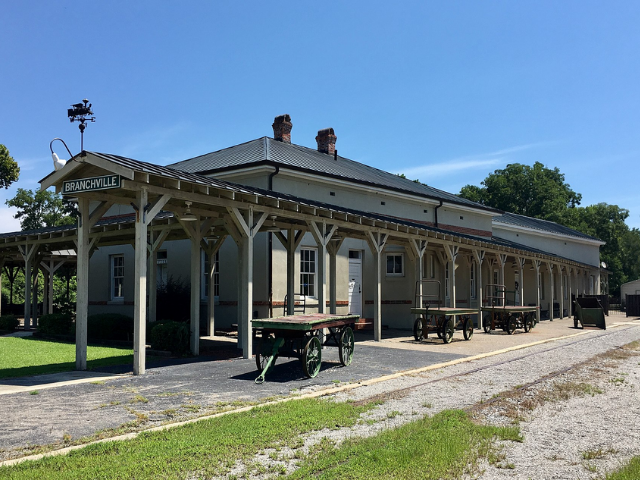
Historic Branchville Station - World's Oldest Railroad Junction (7 August 2018). Wikimedia Commons. Retrieved 16:12 May 26, 2021.
Orangeburg County and its county seat, Orangeburg, were named for William IV (1711-1751), Prince of Orange, the son-in-law of King George II. The name was first used in the 1730s for a township on the Edisto River. Orangeburg District was established in 1769, and from 1785 to 1791, it included four counties: Lexington, Orange, Winton, and Lewisburg. The district was reduced in size when Barnwell (1800) and Lexington (1804) districts were formed; parts of Orangeburg also went to form Aiken (1871) and Calhoun (1908) counties. Swiss and German farmers moved into this region around 1735, and English settlers from the Lowcountry followed. The battle of Eutaw Springs was fought there during the Revolutionary War on September 8, 1781; it was the last major battle of the war in South Carolina. Large plantations using slave labor were established in Orangeburg in the nineteenth century, and the county became a major producer of cotton. Railroads arrived in the area early; Branchville became the first railroad junction in the state in 1840. Union troops under General Sherman passed through Orangeburg in February 1865. In more recent times, on February 8, 1968, Orangeburg was the site of an incident commonly referred to as the Orangeburg Massacre, in which state police killed three South Carolina State College students during a civil rights protest. Orangeburg County was the birthplace of historian Alexander S. Salley (1871-1961) and singer Eartha Kitt.


